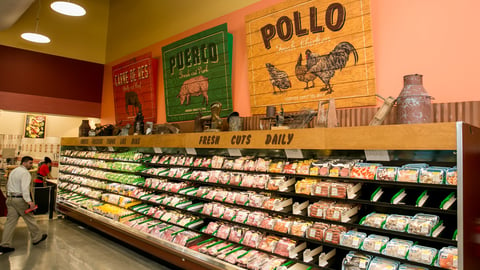Instacart Looks to Credit Card Offers to Spark More Business
Can credit card offers spark even more use of grocery delivery services?
A new Instacart effort will serve as that latest experiment in that area of food retail.
The grocery delivery service this week said that it has teamed with Chase to “provide new offers to Chase Sapphire Reserve and Preferred cardmembers who use Instacart for their online grocery shopping.”
The program, which started Wednesday and runs through Sept. 30, enables those cardholders to earn “extra points on groceries and other essentials delivered or picked up from their favorite local stores via Instacart,” the delivery service said. “Reserve cardmembers will earn 5x total points and Preferred cardmembers will earn 3x total points on all Instacart marketplace delivery and pickup orders — up to $3,000 in spend during the three-month period.”
That’s not all for the Instacart and Chase offer.
“Reserve and Preferred cardmembers will also receive up to $50 in statement credits towards a monthly (currently $9.99) or annual (currently $99) Instacart Express membership, which offers unlimited free delivery and reduced service fees on orders of $35 or more.”
When it comes to food retail and grocery delivery services, credit card offers and tie-ins are hardly new, of course. Various credit card programs operate various rewards schemes tied to food retail purchases and, increasingly, grocery delivery services. Research on the impact of those offers upon grocery delivery services appears scant, at best, but this new Instacart program promises to provide fresh data about how well these payment card programs do indeed work — and how such programs influence customer acquisition, retention and loyalty.
As for Instacart, the San Francisco-based company recently secured $225 million in new funding to scale its operations as it races to keep up with unprecedented shopper demand for online grocery. According to Instacart, its order volumes have surged as much as 500% over the past few months as shoppers have migrated to shopping for groceries online during the pandemic.
The opportunity for payment card networks is meaningful.
A family of four can spend up to some $1,300 per month on groceries, according to the U.S. Department of Agriculture, and with budgets tight during the pandemic, cash-back offers and points can help those families stretch their grocery dollars. As well, the ongoing COVID-19 pandemic has boosted the popularity of grocery delivery services, and that consumer habit — part of a broader shift toward more grocery e-commerce — looks likely to hold after the pandemic eases, according to experts.





